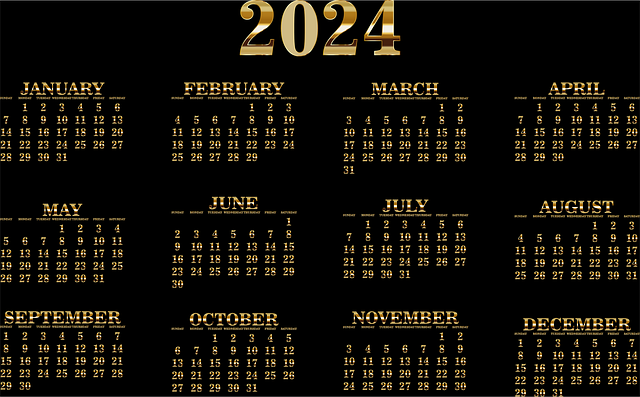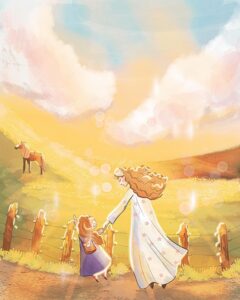Hijri Calendar: Inspiring Muslim Artists’ Timeless Creations
The Hijri Calendar, a lunar-based system with profound cultural and religious significance for Musli…….

The Hijri Calendar, a lunar-based system with profound cultural and religious significance for Muslims worldwide, inspires artistic traditions by integrating historical events and values into creative works. Each Hijri year and month carries symbolic weight, influencing art that explores natural cycles, spiritual teachings, and significant Islamic festivals. This calendar enriches cultural heritage understanding through visually appealing representations of the lunar-earth harmony, fostering connections between earthly and spiritual realms in Islamic art.
The Hijri Calendar, with its rich historical and cultural significance, serves as a timeless muse for Muslim artists. This ancient lunar calendar, marking dates from the Prophet Muhammad’s flight to Medina, offers a unique framework for artistic expression. In this article, we explore how Muslim artists draw inspiration from Hijri years in their work, encompassing seasonal themes, cultural heritage, and the profound connection between time and art.
- Understanding the Hijri Calendar: Muslim Artistic Tradition
- Time and Art: How Hijri Years Inspire Creators
- Seasonal Themes: Nature's Role in Hijri-Infused Artworks
- Cultural Significance: History and Identity in Hijri Work
Understanding the Hijri Calendar: Muslim Artistic Tradition

The Hijri Calendar is a lunar-based system that holds deep cultural and religious significance for Muslims worldwide. It marks the time of Prophet Muhammad’s migration from Mecca to Medina, an event known as the Hegira, in 622 CE. This calendar has been an integral part of Muslim artistic tradition, influencing various forms of creative expression over centuries.
Muslim artists often incorporate the Hijri year into their work, using it as a narrative device or aesthetic element. In historical records, especially in regions where Islamic art flourished, hijri dating is prevalent, allowing artists to date their creations accurately and connect them to significant events in Islamic history. By teaching the Hijri system to beginners, these artists ensure that their cultural heritage and artistic traditions are preserved for future generations. The calendar’s reliance on phases of the moon adds a dynamic element to the artistic timeline, creating a unique visual language where each year is a testament to the rich tapestry of Islamic art and its enduring legacy.
Time and Art: How Hijri Years Inspire Creators

Time and Art: How Hijri Years Inspire Creators
Muslim artists often draw inspiration from the Hijri Calendar, which marks the Islamic years based on the lunar cycle. This unique timekeeping system, in contrast to the widely used Gregorian calendar, significantly influences artistic expressions in various mediums. The Hijri year vs Gregorian year difference creates a rich interplay of cultural and historical references that artists exploit to create captivating works. Each Hijri month, with its specific name and characteristics, carries symbolic weight and encourages artists to explore themes related to Islamic history, traditions, and values.
Islamic months and their significance play a pivotal role in shaping artistic narratives. For instance, artists may capture the spiritual essence of Ramadan or depict the historic events that occurred during specific Hijri years. By tying their art to these significant dates, Muslim creators offer viewers a glimpse into the rich tapestry of Islamic culture. This connection to the Hijri calendar not only enriches artistic expressions but also fosters a deeper understanding and appreciation for Islamic traditions at festivals and other cultural gatherings where artists can share their work with diverse audiences, as we find at many Islamic festivals tied to the Hijri calendar.
Seasonal Themes: Nature's Role in Hijri-Infused Artworks

In Hijri-infused artworks, seasonal themes often play a prominent role, with artists drawing inspiration from nature’s cyclical changes. The Hijri Calendar, based on lunar cycles, aligns with the natural rhythms of the Earth, making seasons and their visual representations integral to this art form. Artists may depict lush springtime landscapes, vibrant autumnal hues, or snowy winter scenes, each reflecting specific months in the Hijri year. These seasonal themes not only showcase the beauty of nature but also serve as a reminder of the transient yet enduring nature of life, a core tenet in Islamic teachings.
By incorporating natural elements, Muslim artists create a visual narrative that connects the spiritual and the earthly. For instance, a painting might feature a barren desert scene from the month of Rajab, symbolizing patience and resilience, or a lush garden during Ramadan, representing the blessings and cooling effect of fasting. This fusion of art and nature allows creators to teach the Hijri system to beginners in an aesthetically pleasing way while highlighting its role in Islamic finance and the significance of converting Gregorian to Hijri dates. Visit us at hijri calendar history and origin anytime to explore these fascinating connections further.
Cultural Significance: History and Identity in Hijri Work

The Hijri Calendar holds immense cultural significance for Muslim artists as it intertwines history and identity within their creative works. This lunar-based calendar, which tracks the Islamic holy month of Ramadan and important festivals like Eid al-Fitr and Eid al-Adha, carries profound symbolism and historical weight. Artists often incorporate references to significant events that occurred during specific Hijri years, weaving a rich narrative thread into their pieces.
For instance, in Islamic architecture, the calendar plays a foundational role, influencing design elements and structural features. Finding us at Hijri calendar’s impact on architecture, artists draw inspiration from historical periods marked by pivotal moments, using intricate patterns, geometric designs, and symbolic motifs that resonate with the faith and culture of their audience. The difference between solar and lunar calendars further enriches this artistic dialogue, allowing for a dynamic interplay of timekeeping systems that reflect both earthly cycles and spiritual milestones in the Islamic tradition.
The Hijri Calendar serves as a rich source of inspiration for Muslim artists, offering not just a measurement of time but also a deep connection to cultural and historical roots. By incorporating Hijri years into their work, artists weave a tapestry of seasonal themes, capture the essence of diverse cultures, and create pieces that resonate with viewers on a profound level. Understanding and appreciating this unique artistic tradition is essential in navigating the vibrant landscape of modern Islamic art.





